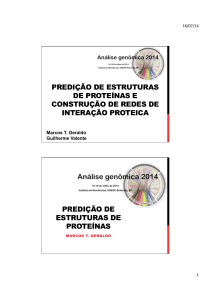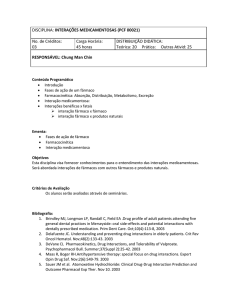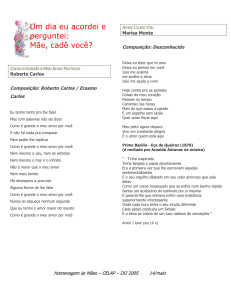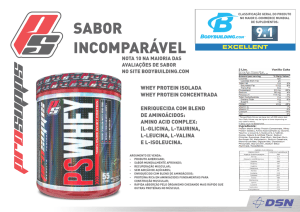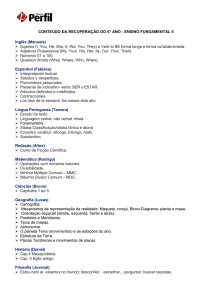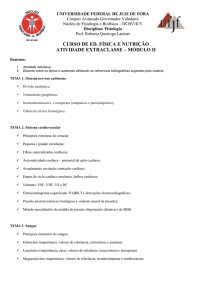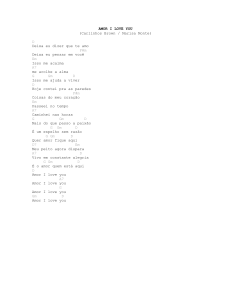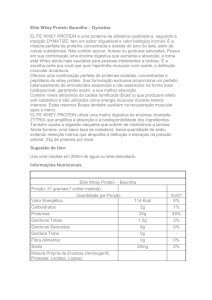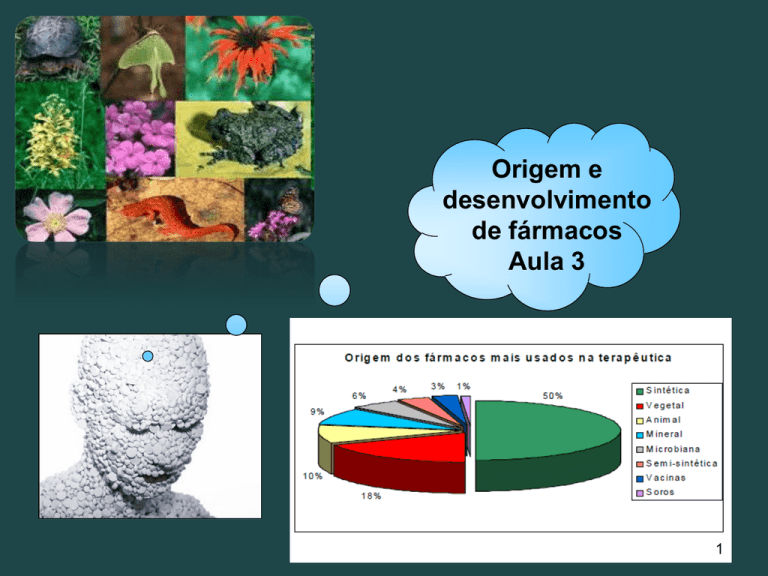
Origem e
desenvolvimento
de fármacos
Aula 3
1
2
1. Genese ao acaso
Penicilina - 1929
H H H
S
N
O
N
O
OH
O
BENZILPENICILINA (1929)
Cultura de S. aureus inibida por um
contaminante
3
4
Caso do Sidenafil
5
2. Triagem empírica
500.000 a 400.000.000 compostos avaliados
Triagem Empírica racionalmente dirigida
6
3. Fontes Naturais
O
O
N
N
H
O
HO
O
H
OH
O
COCAÍNA (1860)
MORFINA (1803)
Curare
7
4. Fármacos descobertos a partir do estudo do
metabolismo
X
8
Principais etapas X Custo alto
9
PRODUTOS
NATURAIS
PLANEJAMENTO RACIONAL
TRIAGEM AMPLA DE COLEÇÕES DE COMPOSTOS
QUÍMICA COMBINATÓRIIA
IDENTIFICAÇÃO DO
PROTÓTIPO ESTRUTURAL
<1-2 anos
ENSAIOS BIOLÓGICOS
PRELIMINARES
SÍNTESE DE ANÁLOGOS
AVALIAÇÃO BIOLÓGICA
ESTUDOS DO METABOLISMO
CADD
PATENTE
1-2 anos
OTIMIZAÇÃO DO PROTÓTIPO, IDENTIFICAÇÃO DE CANDIDATOS A FÁRMACOS
DESENVOLVIMENTO
DO PROCESSO
QUÍMICO
1 a 3 anos
AVALIAÇÃO
BIOLÓGICA
SECUNDÁRIA
TERCIÁRIA
FORMULAÇÃO
ESTUDOS DE
ESTABILIDADE
ESTUDOS DE
METABOLISMO
FARMACOCINÉTICA
TOXICOLOGIA
AGUDA
SUBAGUDA
GENÉTICA
REGISTRO DE FÁRMACO NOVO
FASE
CLÍNICA I
3 a 6 anos
MF
ANIMAL
FASE
CLÍNICA II
FASE
CLÍNICA III
TOXICOLOGIA
(CRÔNICA)
MF
HUMANO
REGISTRO DE APLICAÇÃO DE FÁRMACO NOVO
10
2 a 3 anos
< 1 ano
ATIVIDADE PÓS-REGISTRO
REVISÃO DE REGISTRO
APROVAÇÃO DO REGISTRO
Adaptado de; Yevich, J. P. In: Krogsgaard-Larsen,P.
LILJEFORS,T., MADSEN,U., Eds.A Textbnook of
Drug Design and Development, 2nd ed., Harwood,
Amsterdam, 1996. p. 508.
MERCADOLOGIA
11
12
Dissecação
molecular
13
Num passado não muito distante usava-se
modelos de plástico
14
15
http://ocikbws.uzh.ch/education/teachertech2009/bioinformatics.php
16
Murder at the Airport
The premise: "Become a Crime Scene Investigator and
investigate the cause of death of an American tourist at the
airport. You found out that one protein was responsible for his
death.” You discovered that other tourist can be killed…
http://ocikbws.uzh.ch/education/teachertech2009/bioinformatics.php
17
• Metaloproeínases presentes no veneno de
cobras causaram hemorragias devido a
degradação de matrix endotelial (fibronecetina,
laminina, colágeno nidogenina, etc.)
• Todas estas enzimas são zinco dependentes
e possuem um ambiente de coordenação do
zinco muito semelhante.
• A hemorragia é causada
pela ação direta em vasos
sanguíneos, sugerindo a
clivagem
de
ligação
peptídica de componentes
da membrana de células
endoteliais
• (venom atrolysin).
Gutiérrez JM, Rucavado A., Biochimie. 2000 Sep-Oct;82(9-10):841-50. Snake venom
metalloproteinases: their role in the pathogenesis of local tissue damage.
18
PART 1: Activity: Introduction to Protein
Structures.
Question 1) Explain why systematically mutating all the amino acids of a protein,
one by one, can resolve which amino acids are important.
Question 2) Recall from the theory portion: what 3 interactions are important for
protein folding?
Answer: The three types of interactions are: hydrogen bonds, ionic interactions / salt
bridges and hydrophobic interactions.
19
PART 2: Activity:
You now know enough to look at the venom atrolysin, which may be
familiar to you if you did the Murder at the airport practicum. Let's start by
loading the 3D structure of the poison .
20
Região do sítio
ativo
A
C
1. We are looking for a molecule that binds so tightly
to the venom that it cannot be released anymore.
This will inactivate the poison.
2. You have already seen interactions that cause the
protein to fold in a particular way. The binding of the
antidote depends on similar interactions.
3. Therefore, one should look for hydrogen bonds,
hydrophobic interactions and ionic interactions.
4. Of course, the antidote must also fit in the cavity.
The antidote is
in one of this
flask
B
D
21
*Designing the antidote*
1. A small molecule enters the active site and binds to our venom protein. This small molecule
is called a ligand, and is made in such a way that it fits nicely in the protein cavity.
2. However, it is made only of carbons, and will therefore not have many strong interactions
with the active site.
22
Question: Look at the different drawings of antidotes. Mark the atoms that may be
involved in interactions with the protein.
Answer: View the marked atoms below. Most of them can form hydrogen bonds. The -SH group (thiol-group)
can only form very weak hydrogen bonds, although in theory it could form one. The negatively charged
oxygen in candidate 2 (C) can form an ionic bond with the ligand.
23
We have the 4 different
possible
antidotes
complexed with the ligand
here as .vsf "states" the .vsf
file already has the view
focused on the biding site
with the ligand and the Zn
rendered as a space-filling
molecule:
ligandAcomplex.vsf
ligandBcomplex.vsf
ligandCcomplex.vsf
ligandDcomplex.vsf
24
Question 8: Which ligand would you use as an antidote? Explain why.
Answer: Adapted ligand (ligand C) is the best candidate to be used as antidote. In this ligand,
the peptide bond forms two hydrogen bonds and the carboxyl group makes a very strong salt
bridge with the zinc ion of the protein. The other ligands have fewer (or less strong) interactions
and will not bind as well.
Zn
Composto
25
26
Bioisósteros
1925 => Grimm formulou
Regra do Hidreto
Aula 4
Profa Giovana Gioppo Nunes
31
Breve histórico da QIM
3500 a.c. → Egípicios utilizavam sais de cobre para esterilizar água;
3500 a.c. → Uso de ouro por chineses e árabes como elixir da vida;
1500 a.c. → Relato de álguns fármacos de ferro e uso de sais de zinco para
curar feridas;
Século X → Sais de mercurio para o tratamento de infecções;
Século XVI → Sais de halogenetos, cianetos, óxidos e sulforetos no tratamento da
sífilis, uso de AgNO3 devido sua ação bacteriana;
Século IXX → Uso de K[(AuCN)2] contra o bacilo da tuberculose;
Século XX → Sais de mercúrio com atividade antisséptica;
Meados do século XX → uso da cis-platina.
← Século XXI →
32
“Elementos orgânicos”: C, H, N, O
Macronutrientes: Na, K, Mg, Ca, S, P, Cl,
Si, Fe
Micronutrientes: V, Cr, Mn, Co, Ni, Cu,
Zn, Mo, W, Se, F, I
Baran, 1995
33
Elementos Essenciais
e suplementos
alimentares
Quelatote
rapia
Diagnósticos por
imagem
Química Inorgânica Medicinal
Agentes
terapeuticos
Inibidores
enzimáticos
Radiofármacos e agentes
de diagnóse
Guo, Z. Sadler, P.J. Angew. Chem. Int. Ed. 1999, 38, 1512
Orvig, C. Abrams, M.J. Chemical Reviews, 1999, 99, 2201
34
Thompson, K.H, Orvig, C.; Science, 2003, 300, 936
35
Formação de complexo Metal ligante-biológico
1. Caráter duro macio do metal e dos ligantes
36
2 Concentração do íon metálico e do ligante em torno do sítio de complexação.
(determinada através de gradientes de concentração, permeabilidade da
membrana, etc.
37
Teste de um novo
medicamento para
tratamento de ácido úrico
em roedores
•
•
Em 1949, o lítio foi introduzido na prática psiquiátrica e o
carbonato de lítio se tornou a mais importante droga da
Psiquiatria moderna.
Desde 1975 este medicamento tem sido utilizado na
prevenção de várias doenças maníaco-depressivas por
cerca de 1% da população do mundo todo.
38
39
Exemplo: Tratamento da Leishimaniose
40
CrO42-
Permeação
através da
membrana
celular
41
41
42
Essencialmente, dois derivados de antimônio pentavalente encontram- se em
uso clínico desde 1945: o antimoniato de meglumina (Glucantime®) e o Rhodia,
Foto 1) e o estibogluconato de sódio (Pentostam®, Welcome). No Brasil o
43
medicamento utilizado é antimoniato de meglumina.
44
2 Concentração do íon metálico e do ligante em torno do sítio de complexação.
(determinada através de gradientes de concentração, permeabilidade da
membrana, etc.
45

